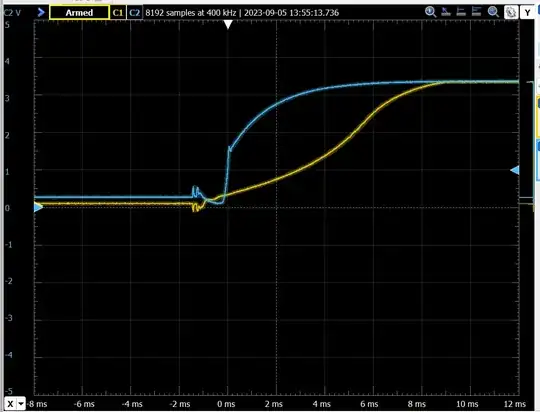Below, I have waveforms showing power-up on the 3.3 V rail of two otherwise-identical microcontroller boards, the only difference being two different 3.3 V DC-DC switching regulators. In the blue, the V7803-1000 and in the yellow, the VX7803-1000. According to their respective datasheets, both regulators have nearly-identical specs, but the VX takes significantly more time to stabilize after power-up, and in fact exceeds the rising slope requirement of the microcontroller (min 1.9 V/ms), badly enough to cause boot failure.
More data points: I tested the K7803-1000R3 which resulted in a curve almost identical to the yellow curve below. After a few hours reviewing other regulators, I only found two companies that list rise time in a datasheet: TI's TPSM84203 intentionally provides a 5-ms soft start (0.66 V/ms), and the new-to-me XP Power sells the JCA0624S03 which has comes closest at 0.94 V/ms.
What causes the significant difference between rising slope on two apparently "identical-spec" DC-DC converters? Is there any way, short of purchasing and physically testing potentially hundreds of equivalent converters, to determine which will output a rising slope that meets the spec, since few datasheets appear to provide information about start-up rise time? Is there a better way for a 3.3 V power rail to meet a minimum 1.9 V/ms rise time, that renders the choice of regulator moot?
